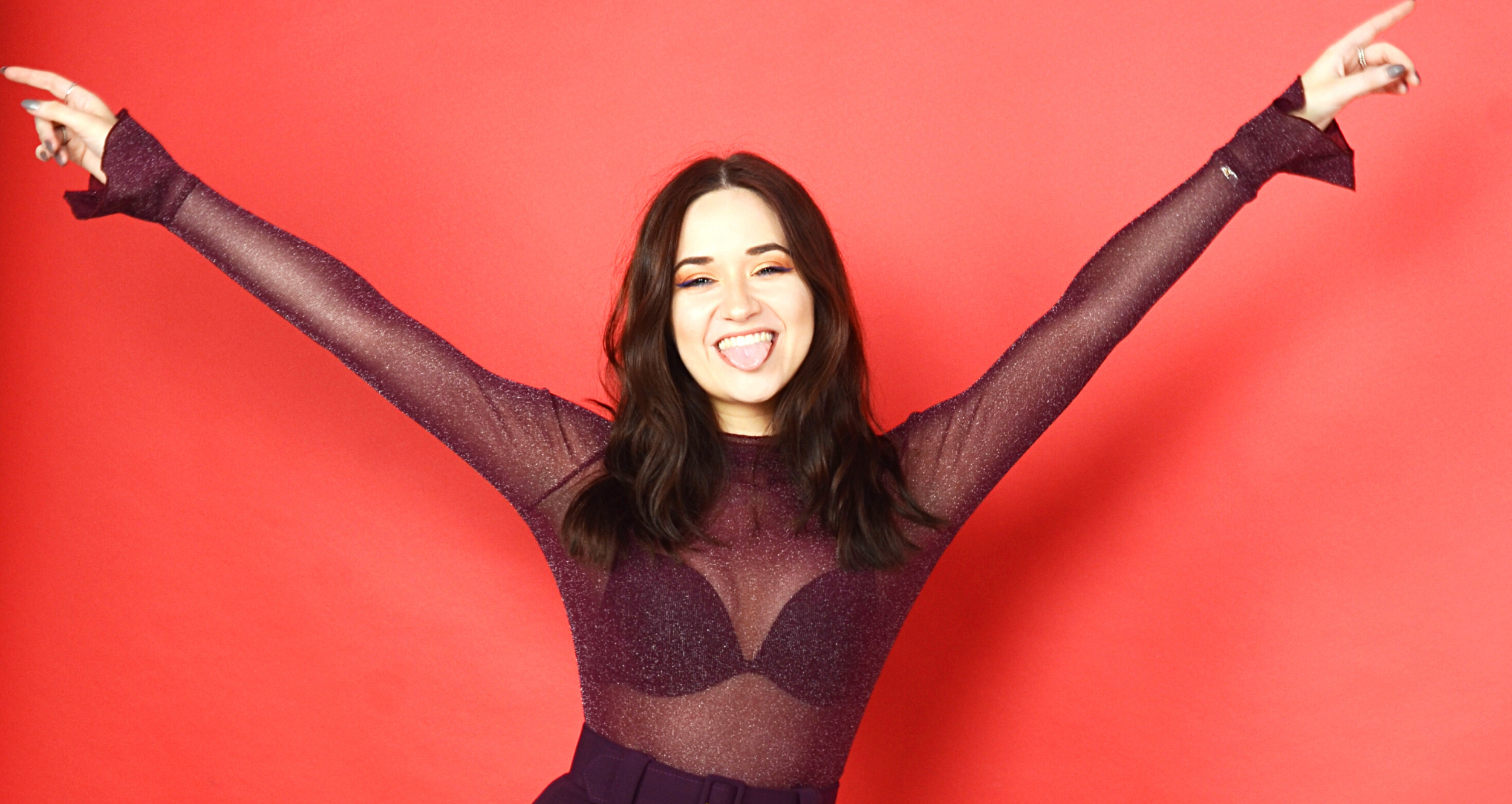Unless you are shooting in black and white (which are, realistically, both colors as well), color is a very important part of your image. It can make the difference between a great image and one that is truly stunning.
So, how do you create harmony in color? You probably won’t be surprised to hear that we’ll be taking a lot of inspiration from the world of art. Just as a painter needs to know which colors of paint to mix for a harmonized look in their finished artwork, so you as a photographer should get to grips with the colors you’ll want to include in your frame.
Here is what we will cover:
- Unicolor for impact
- Using the color wheel
- Align the details for spot color magic
- Warm vs. cold
- Destroy the rules
Recommended Reading: Want to create memorable, fascinating, and impressive color photographs? Grab a copy of Photzy’s premium guide: Rich and Vibrant Color Photography Volume 1.
Unicolor for Impact
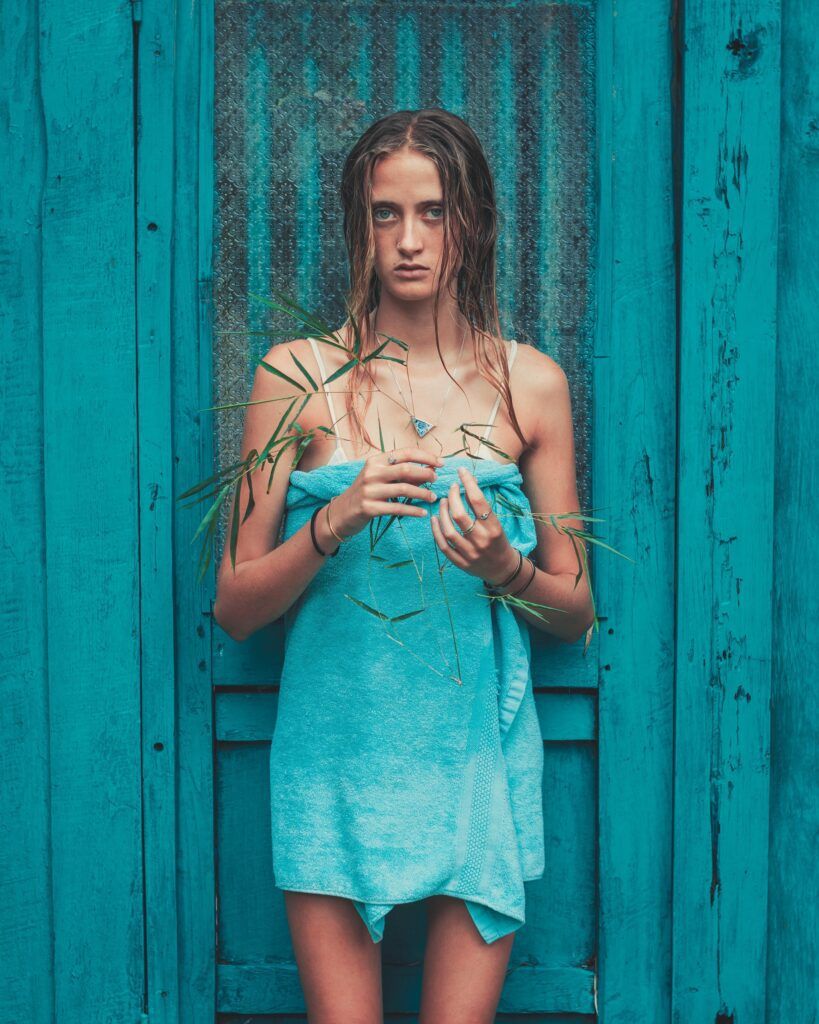
Matching colors within the frame can have a huge impact. Photograph by Sebastian Staines
One great technique for really making an image pop, and drawing a lot of attention, is to go for a one-color frame.
The idea here is to capture several different elements which are all the same color, or at least shades of the same color. It’s not about just taking a picture of a teal wall, for example, even though that might pop. It’s about being able to bring in other matching elements, such as a teal dress, worn by a model with teal eyes, wearing teal accessories. The more elements you can fit in within the same color range, the more surprising the image will be. And this, of course, means it will have more impact.
Color magic is created when something is so bright, so surprising, or so beautifully well-matched that it makes the viewer stop and admire the image. That’s something to keep in mind as we move through this guide: we want those eyes to first be drawn to our photograph, and then linger on it, unable to look away. If we achieve that, we’ve hit color magic, and sticking to a single color within the frame is a great way to do it.
Key Lesson: Make your frame all one color for maximum impact. Start with a colorful location and then build your other elements to match!
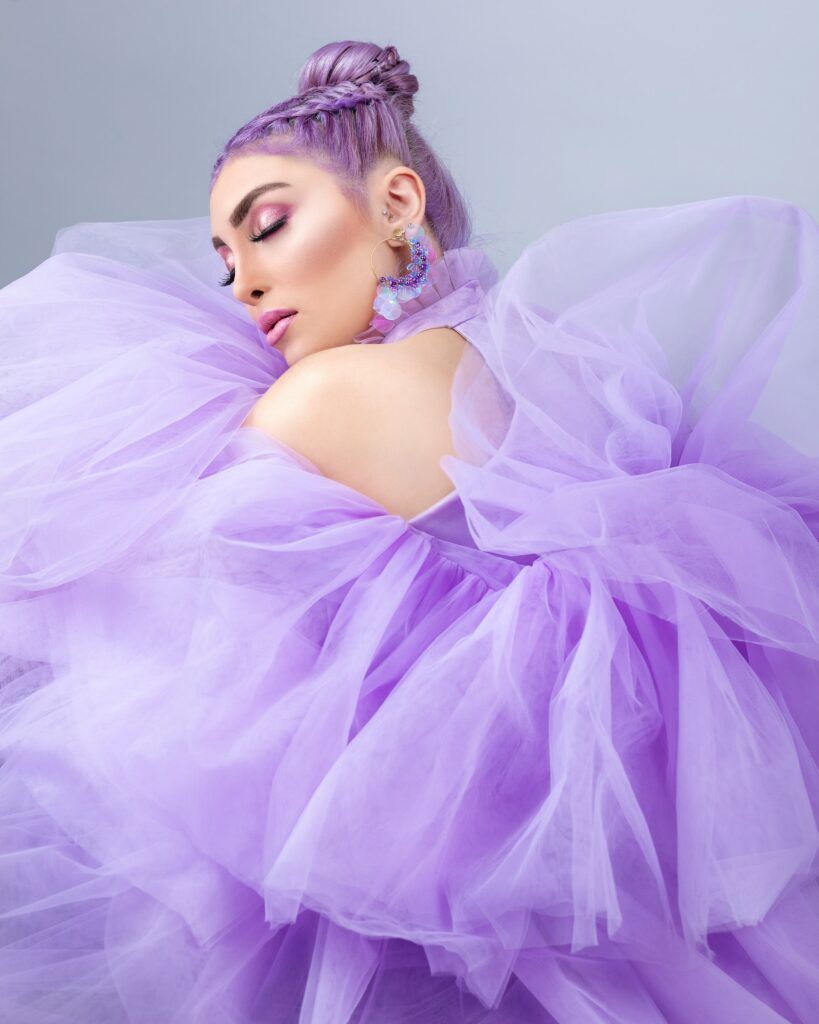
Using the Color Wheel

Blue and orange are opposite one another on the color wheel, which creates this beautiful contrast. Photograph by Guzman Barquin
Now, onto the art lessons we promised! A color wheel is a tool that artists have been using for a very long time, and it essentially sets out which colors go together and which ones clash. When looking at the color wheel, you’re most likely to think of a rainbow, but the key difference here is the circular format because that tells us everything we need to know.
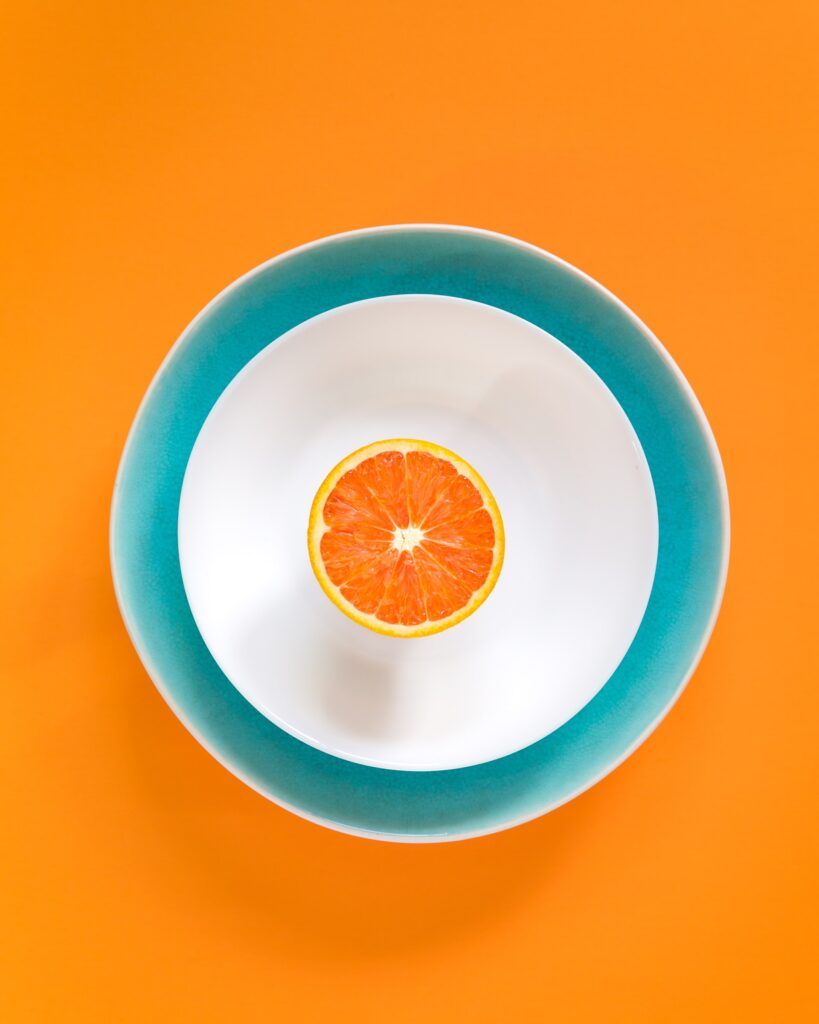
Colors that are next to one another in the wheel are generally quite complimentary. One half of the color wheel is cold tones, and the other half is warm tones (we’ll get back to that later). You might put orange and yellow together, for example, because they’re right next to one another on the wheel and they are both in the warm half, which will create a sunny, summery image.
However, when you use opposites on the wheel, this is when the magic happens. The colors that are opposite one another go together really nicely. They create a popping contrast that immediately stands out. Blue and orange, red and green, and even some shades of red and blue are all opposite one another, and all have a huge impact.
...When you use opposites on the wheel, this is when the magic happens.
Study the color wheel to know which colors work best together, and try to avoid color combinations that clash unless you are deliberately trying to make someone’s eyes hurt when they look at your image!
Key Lesson: Learn to use the color wheel to identify which colors work strongly together. Using this guide, you can identify opportunities for photographs that are going to stand out with stunning color harmony.
Align the Details for Spot Color Magic
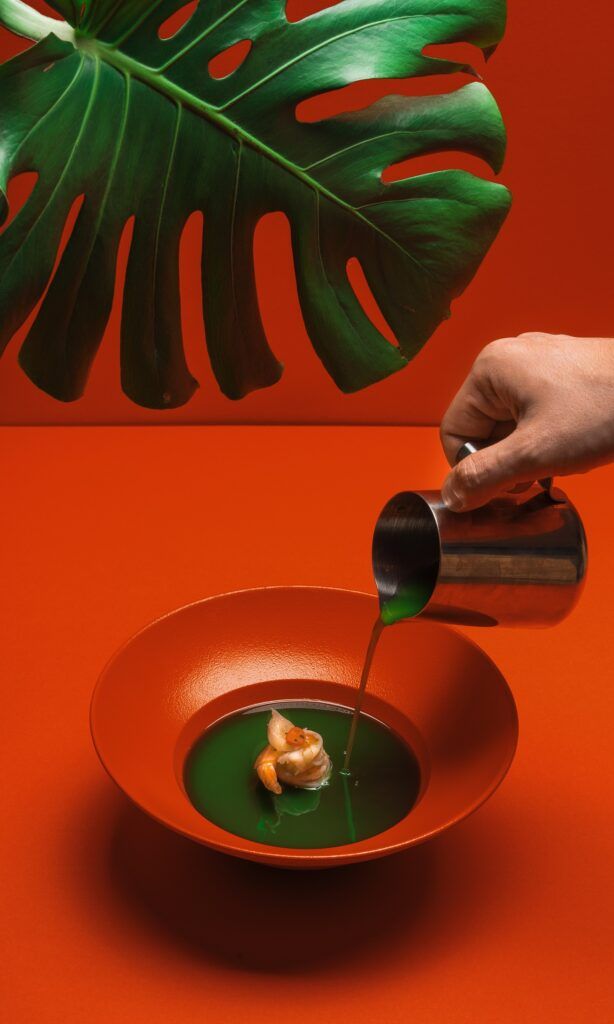
Two pops of color can make a photograph seem much more artistic and interesting. The green leaf brings out the green sauce more strongly than if it was alone. Photograph by Ruslan Bardash
If you’ve been doing photography even for a short amount of time, you’ve probably already heard of the concept of spot color. This is when you have an image that is otherwise shot in neutral or plain colors, or even black and white, and then feature just one pop of color.
But you can take this concept further, and also create a shot that has more of an artistic feel, by bringing in two or more small pops of matching color. What this does is bring harmony and a kind of symmetry to the image, even if the pops are not evenly spaced. Of course, using the rule of thirds or the golden ratio to place them within the frame can make them have even more impact!
It also helps you to tell a story. You’re effectively drawing a parallel between one thing and another, and if these two objects are very different things, then imagine the surprise impact of the image!
Key Lesson: Use color pops wisely to create a story within your image. Two or three pops make a compelling image that draws the eye across the frame.
Warm vs. Cold
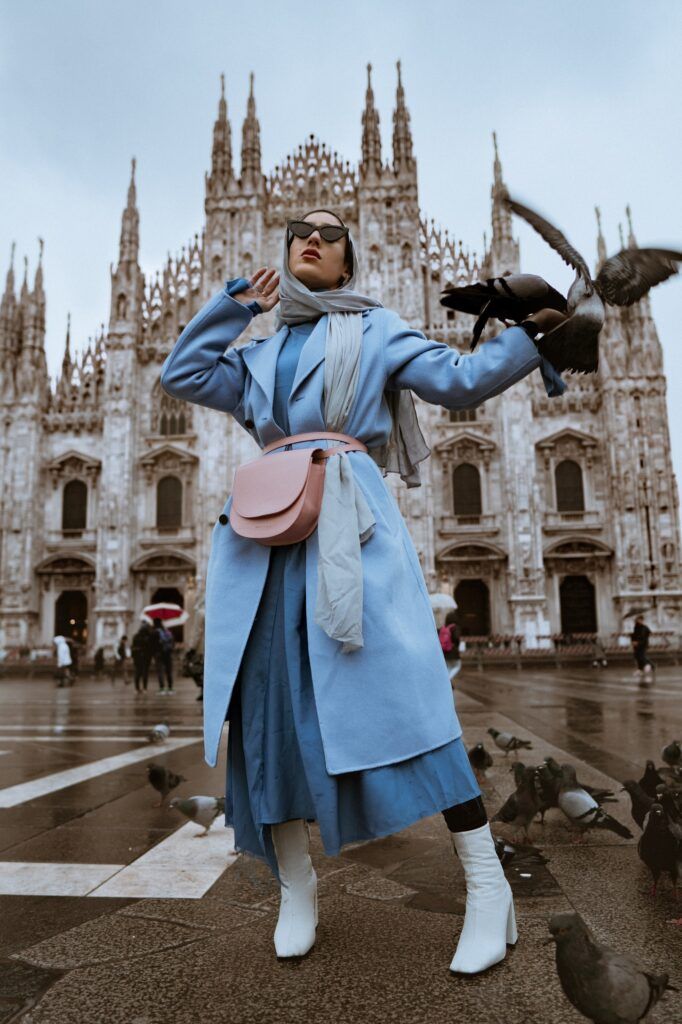
This image draws on cold tones to create color harmony, without it having to be too obvious or matching. Photograph by Alexi Romano
Back to those warm and cold colors, we mentioned earlier. Blues, purples, and greens can be quite cold, while reds, oranges, and yellows can feel warm. You can identify this easily by thinking about a room that has painted walls. You’ve probably been inside a school, hospital, or other public building which was painted all one color. How did being inside that room make you feel? Was it a warm or cold color on the walls?
Blues, purples, and greens can be quite cold, while reds, oranges, and yellows can feel warm.
Using colors from within the same half of the color wheel can create a real mood for your images. If you use all warm colors, it will feel vibrant, energetic, and bold. If you use all cold colors, it can create a moody, sad, dramatic feel. In this way, you can use color very thoughtfully without having to pick out a matching palette of the same color. Just make sure that all your colors are either warm or hot and don’t mix and match them.
Key Lesson: Warm colors are great for bright and sunny shots that make you feel energetic and playful. Cold colors are better when you want to create a moody, atmospheric, or dramatic image.
Destroy the Rules
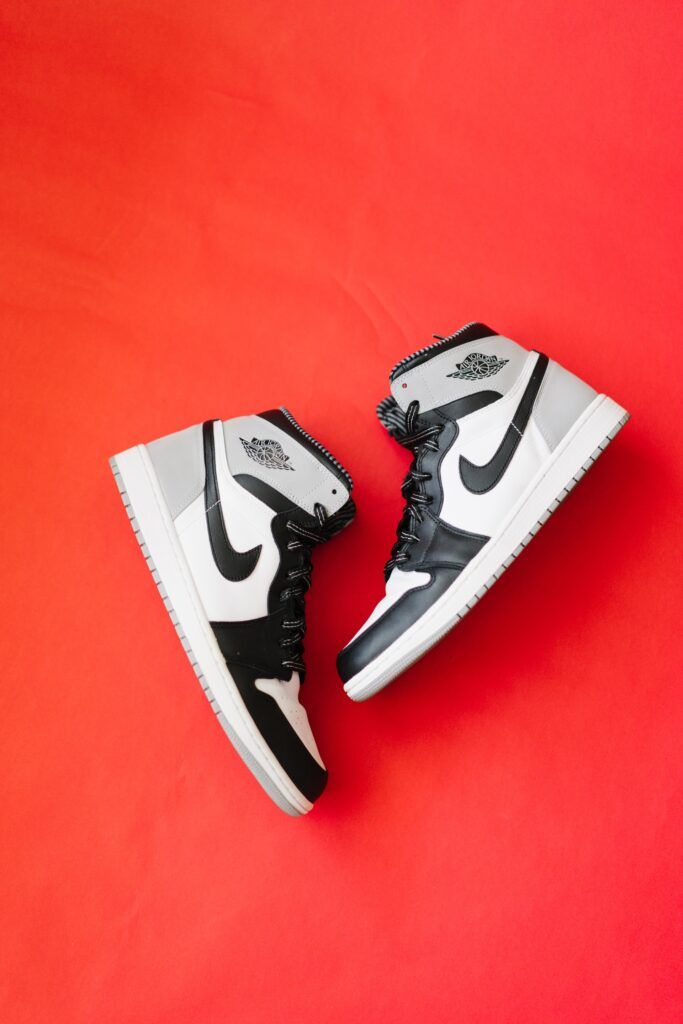
You’d think a monochrome backdrop would work best for black and white shoes, but sometimes going for something completely unexpected can work even better! Photograph by SoleSavy
Now that you know how to use color, the natural thing to do is to tear up the rulebook. After all, rules are made to be broken!
Go wild and experiment with clashing colors, such as putting warm and cold shades that aren’t opposite one another on the color wheel together. Try reverse color pops, in which the background itself is the pop of color and the objects are plain or neutral colors.
In photography, the point of knowing all the rules of composition is understanding when to use them and when to just throw them away. Over time and with experimentation, you can get to grips with color and understand when it’s time for harmony and when it’s time for chaos.
Key Lesson: Having an understanding of a major compositional rule means being able to break it in interesting and unexpected ways for even more impact!
Recommended Reading: Want to create memorable, fascinating, and impressive color photographs? Grab a copy of Photzy’s premium guide: Rich and Vibrant Color Photography Volume 1.
Conclusion
Using color harmony to create magical photos is easy when your know-how. Just consider the following steps and options:
- Start with one single color and try to fill the frame with different elements
- Use the color wheel to identify complementary colors that go together
- Create color pops for more impact and to tell a stronger story
- Use cold or warm tones to create the mood of your image
- Break the rules only once you know how to use them

Photography by Rhiannon D’Averc
Self-Check Quiz:
- How many elements of matching color should you include at a minimum to give an image impact?
- How can we measure whether we’ve achieved color magic?
- What is the color wheel?
- When choosing your primary color, where on the wheel should you look for a complementary color?
- What is a spot color?
- Which colors are considered warm tones?
- Which colors are considered cold tones?
- How can you break the rules in interesting ways for color chaos?


